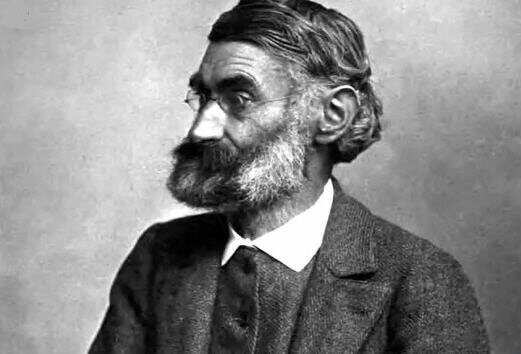Who was Ernst Abbe? Information about the life, works and inventions of Ernst Abbe, the reformist scientist who laid the foundation of modern optics.

Ernst Abbe (1840-1905) was a German physicist, mathematician, and optics pioneer who made significant contributions to the fields of microscopy and optical theory. He is best known for his work in improving the design of microscopes and for formulating Abbe’s theory of image formation, which laid the foundation for modern microscopy. Abbe’s theory established the fundamental principles of microscope optics and how they influence the quality and resolution of images.
Abbe’s most notable contribution was his development of the Abbe sine condition, which defined the requirements for achieving the best possible image quality in a microscope. This condition is based on the relationship between the numerical aperture of the objective lens, the refractive index of the medium between the lens and the specimen, and the wavelength of light used for imaging.
Ernst Abbe’s work significantly advanced the field of microscopy and had a profound impact on various scientific disciplines, particularly biology and medicine, by allowing for the visualization of very small structures and enabling important discoveries in those fields. His contributions to optics and microscopy continue to be fundamental in the design and understanding of modern microscopes.
Biography
Ernst Abbe was a German physicist, mathematician, and optics pioneer. Here’s a brief biography of his life and achievements:
- Early Life: Ernst Abbe was born on January 23, 1840, in Eisenach, Germany. He was the son of a foreman in a small factory.
- Education: Abbe demonstrated exceptional mathematical talent at a young age. He studied mathematics and physics at the University of Jena, where he later earned his doctorate in 1861.
- Career at Carl Zeiss: In 1866, Abbe began working at the Carl Zeiss optics company in Jena, Germany. There, he collaborated with Carl Zeiss, the founder of the company, and together they made significant advancements in optical instruments, including microscopes and telescopes.
- Abbe’s Theory of Image Formation: Abbe’s most significant contribution to optics was the development of Abbe’s theory of image formation. This theory, which he published in 1873, defined the relationship between the numerical aperture of a lens, the refractive index of the medium, and the wavelength of light in the context of microscopy. It laid the foundation for modern microscopy and significantly improved the design of microscopes.
- Abbe Sine Condition: Abbe introduced the “Abbe sine condition,” which is a critical principle in microscope design, ensuring that optical components are properly aligned to achieve high-quality and well-resolved images.
- Advances in Microscopy: Abbe’s work had a profound impact on microscopy, allowing scientists to observe and study tiny structures with higher clarity and resolution. This had significant implications for various scientific fields, particularly biology and medicine.
- Teaching and Academic Career: In addition to his work at Carl Zeiss, Abbe became a professor at the University of Jena, where he trained a generation of scientists and engineers in the principles of optics.
- Legacy: Ernst Abbe’s contributions to optics and microscopy remain foundational in the field. His work revolutionized the design of optical instruments and enabled countless scientific discoveries. He also co-founded the Zeiss Foundation, which ensured the long-term success and development of the Carl Zeiss company.
- Later Life and Death: Ernst Abbe continued to work in the field of optics until his death. He passed away on January 14, 1905, in Jena, Germany.
Ernst Abbe’s life and work had a lasting impact on the world of science and technology, particularly in the field of optics and microscopy, and his contributions continue to be celebrated and studied to this day.
Works and Contributions to Science
Ernst Abbe made significant contributions to the fields of optics and microscopy, and his work had a profound impact on science and technology. Here are some of his major works and contributions:
- Abbe’s Theory of Image Formation: Ernst Abbe’s most notable contribution was the development of Abbe’s theory of image formation, which he published in 1873. This theory defined the fundamental principles of how microscopes produce images and the factors that affect image quality. It introduced the concept of numerical aperture and explained how the refractive index of the medium and the wavelength of light influence the resolution and quality of microscope images.
- Abbe Sine Condition: Abbe introduced the “Abbe sine condition,” a critical principle in microscope design. This condition describes the requirements for achieving the best possible image quality, emphasizing the proper alignment of optical components in microscopes to ensure well-resolved images. It remains a fundamental principle in microscopy and optics.
- Advances in Microscope Design: Abbe’s work led to significant improvements in the design of microscopes. He developed high-quality lens systems and microscope objectives that allowed for better resolution and image clarity. This revolutionized microscopy, enabling scientists to study small biological and physical structures with greater precision.
- Contributions to Microscopy: Abbe’s advancements in microscope design had a profound impact on various scientific disciplines, including biology, medicine, and materials science. His work allowed for the visualization and study of cells, microorganisms, and other tiny structures, leading to numerous scientific discoveries and breakthroughs.
- Co-Founding the Zeiss Foundation: Ernst Abbe, along with Carl Zeiss, co-founded the Zeiss Foundation, which played a crucial role in ensuring the long-term success and development of the Carl Zeiss optics company. The foundation’s endowment supported research and innovation in optics and microscopy.
- Teaching and Mentorship: Abbe was also a dedicated educator, serving as a professor at the University of Jena. He trained a generation of scientists and engineers in the principles of optics, furthering the field and ensuring a legacy of knowledge and expertise.
Ernst Abbe’s contributions to optics and microscopy continue to be fundamental in the design and understanding of modern optical instruments. His work had a lasting impact on scientific research and technological development, and he is remembered as a pioneer in the field of optics.